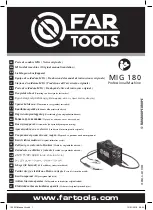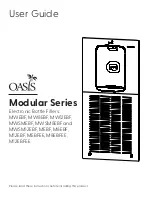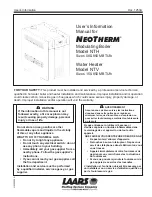
Page 4
Installation must comply with State and local plumbing regulations. Do not use with water that is micro-
biologically unsafe or of unknown quality without adequate disinfection before or after the system.
System is intended to be installed using the cold water supply only.
Tank – White (Plastic or Metal)
Faucet Box/Bag
Module – White (Filters Pre-Installed)
Manual
Parts
Bag
Tools Recommended For Installation
√
1 1/4" Diamond Tipped Hole Saw bit for faucet opening (Counter Tops/Porcelain & Stainless Sinks)
√
1 1/4” Adjustable Wrench
√
Phillips bit for electric drill
√
1/2" Open End Wrench
√
Needle Nose Pliers
√
5/8” Open End Wrench
√
Adjustable Pliers
√
Electric Drill
√
Sharp Knife
√
1/8" diamond tip bit, pilot hole
√
Phillips Screw Driver
√
1/4” drain saddle hole
Contents of the Reverse Osmosis (RO) System
Operating Temperatures:
Maximum 100°F (37.8°C)
Minimum 40°F (4.4°C)
Operating Pressure:
Maximum 100 psi (7.0 kg/cm
2
)
Minimum 40 psi (2.80 kg/cm
2
)
pH Parameters:
Maximum 11
Minimum 2
Iron:
Maximum 0.2 ppm
TDS (Total Dissolved Solids)
< 1800 ppm
Turbidity
< 5 NTU
Hardness
Maximum 10 Grains Per Gallon
*
Hardness:
Recommended hardness not to exceed 10 grains per gallon, or 170 parts per million.
*
System will operate with hardness over 10 grains but the membrane life may be shortened.
Addition of a water softener may lengthen the membrane life.
Copper Tube:
Reverse Osmosis water should not be run through copper tube as the purity of the
water will leach copper causing an objectional taste in water and pin holes may form in the tube.
Water Pressure:
The operating water pressure in your home should be tested over a 24 hour
period to attain the maximum pressure. If the incoming water pressure is above 100 psi then a
water pressure regulator is required. A booster pump is needed for incoming water pressure
under 40psi.
Operational Parameters
INSTALLATION & STARTUP
INSTALLATION & STARTUP





































